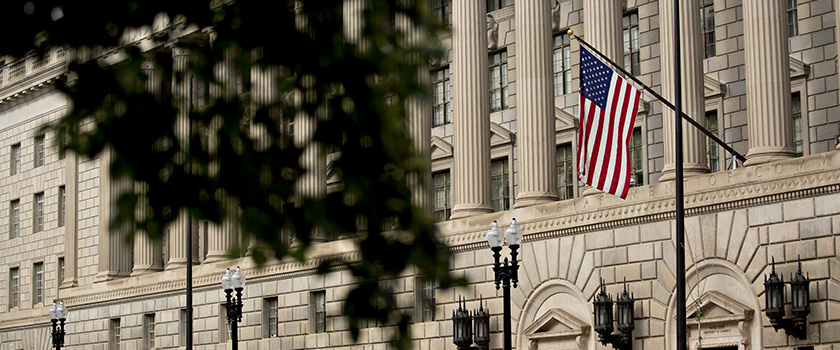Coming into 2024, here at UBP we hold a constructive view on the JPY. We anticipate that it will continue to appreciate over the course of the year, and we envisage a USD/JPY downward move to levels of around 135 by year-end, with risk skewed to the downside of this level. This represents a decline of at least 6% from current levels. Our generally constructive stance on JPY exchange rates reflects several factors.
First, we anticipate that the Bank of Japan (BoJ) will continue to slowly normalise its monetary policy stance over the course of the year. In 2023, the BoJ moved to liberalise its yield curve control (YCC) policy, meaning that it allowed 10-year JGB yields to steepen to levels of around 1%, whereas previously, the BoJ had capped 10-year JGB yields at only 0.1%. The BoJ has continued to run a looser monetary policy compared with the other major central banks, and this is best illustrated by its current deposit rate of -0.1%. The BoJ is the only major central bank with a negative deposit rate and markets anticipate that the BoJ will raise this at some point in 2024.
That said, we believe that the BoJ will wait until it has more data regarding the trajectory of underlying Japanese inflation dynamics before raising its deposit rate. This means that it will likely wait until the end of the shunto wage negotiations in March before making a decision on raising the deposit rate. We think that the BoJ will only raise rates slowly to a maximum level of around 0.50%. This level is consistent with most estimates of the Japanese neutral equilibrium interest rate.
Investors should not expect rapid monetary policy normalisation.
In 2023, we learned that the BoJ under Governor Ueda takes its time with changes to its monetary policy stance. This is because the BoJ is especially mindful of any potentially negative side effects of a rapid exit from its unorthodox policy mix. Consequently, we do not anticipate any significant appreciation in the JPY until Q2 2024.
Second, we believe that the recent decline in US 10-year yields will continue to drag the USD/JPY lower over the coming months. The USD/JPY illustrates a longstanding correlation with US 10-year yields, and current 10-year yields are consistent with USD/JPY exchange rates of below 140. If US and global inflation dynamics continue to contract over the coming months, this skews risks to the downside for US yields. The corollary of this is that we may continue to see lower USD/JPY levels manifest themselves, most likely from March onwards. We do not believe that aggressive JPY appreciation is likely in Q1, mainly because the BoJ will not tighten its policy, but also because risk sentiment is likely to remain buoyant, thus limiting idiosyncratic JPY appreciation pressures.
Third, we note that the JPY presents an incredibly low valuation profile. In standard valuation measures, such as trade-weighted or real effective exchange rate (REER) terms, the JPY has never traded at lower levels. This absurdly low valuation profile implies that the JPY is unlikely to weaken further and falling global inflation pressures will act against JPY depreciation. The JPY’s extremely cheap valuation profile means that even a small catalyst could propel it towards a more sustained appreciation trend, and there are several potential catalysts for such a move, ranging from BoJ rate hikes to lower US yields or even significant capital inflows.
Fourth, we note that investor interest has increased materially in recent months as regards the outlook for Japanese equities. Japanese equities now illustrate an impressive risk/reward profile, reflecting cheap valuations, strong earnings growth and significant improvements in corporate governance. In 2023, Japanese equities experienced material pricing gains, and there is the prospect of much more to come in the next few years. The implication of this is that the JPY may appreciate as a result of large capital inflows into the domestic equity market. This is not something that has happened to any large extent in recent years and as capital inflows manifest themselves it will place marginal appreciation pressure on the JPY.
Staying on the theme of capital inflows, we have observed the recent moderation in globally traded energy prices. This is a benign development for the JPY, because lower energy import prices result in a widening in Japan’s trade and current account surpluses, which is fundamentally supportive of JPY exchange rates. It is not a coincidence that the JPY weakened considerably in 2022 when globally traded oil and gas prices surged following Russia’s invasion of Ukraine. If energy prices do not rise materially in 2024, this will act as a tailwind for Japan’s balance of payments position, which should be supportive at the margin for JPY exchange rates. The bottom line is that there are several potential catalysts lining up for a phase of sustained JPY appreciation in 2024.









